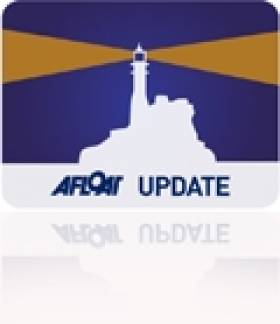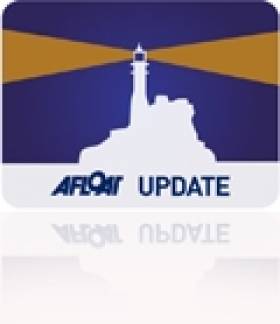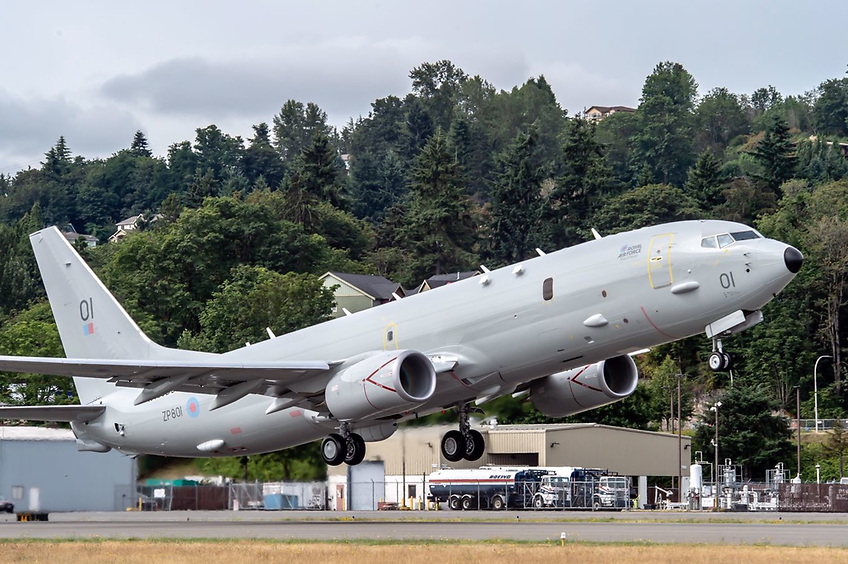Displaying items by tag: RAN
No Slowing Down for Cork Supercrew Justin Slattery as Newport Bermuda Race Kicks Off Packed Calendar for Second Half of 2022
2022 has been a busy year so far for Ireland’s top offshore racer Justin Slattery — and it’s not slowing down anytime soon.
While the double Volvo Ocean Race champion crewman won’t be taking part in this weekend’s Round Ireland Race, that’s only because he’s starting the Newport Bermuda Race later this week (follow the race tracker when it gets under way this Friday 17 June).
As regular Afloat readers know, the Cork man was on Rán when it won the UK IRC Nationals on the Solent this past weekend.
 Smiles all round for the team on Niklas Zennström's Carkeek FAST40+ Rán (including Ireland's Justin Slattery, fourth from left) after winning the 2022 IRC National Championship + class victory in IRC One Photo: Rick Tomlinson
Smiles all round for the team on Niklas Zennström's Carkeek FAST40+ Rán (including Ireland's Justin Slattery, fourth from left) after winning the 2022 IRC National Championship + class victory in IRC One Photo: Rick Tomlinson
It was just the latest in a series of stellar results that started in January with victory — and a new record — in the RORC Transatlantic Race with the super-maxi Comanche.
The following month, Comanche with Slattery on deck came second overall in the Caribbean 600.
Staying in the West Indies, he joined the crew of the world’s largest carbon composite sailing yacht, Hetairos, setting a new monohull record in early March’s Round Antigua Race and defending the St Barths Bucket title a few weeks later.
 Comanche won the IMA Trophy and set a new race record after arriving in Grenada in record time | Credit: James Mitchell/RORC
Comanche won the IMA Trophy and set a new race record after arriving in Grenada in record time | Credit: James Mitchell/RORC
Crossing the Atlantic, Slattery was part of the winning crew of the WallyCento yacht Galateia at Mallorca’s PalmaVela regatta last month — and more recently was back on Rán, Niklas Zennström’s FAST40+, as it dominated the fleet at the RORC Vice Admiral’s Cup.
Slattery’s calendar for the rest of 2022 looks just as packed. Following the Newport Bermuda Race, he returns to Palma at the end of June for the Superyacht Cup to compete on the J Class entry Ranger.
He’ll be on board Rán Racing’s TP52 for the Channel Race in July, as well as the Rolex Middle Sea Race in October.
August brings Hamilton Island Race Week, where he’ll join the crew of Andoo — the new name of the 100-footer Comanche. Andoo is also scheduled for the year-ending Rolex Sydney Hobart Yacht Race.
And in September he’s back in the Mediterranean on Galateia for both the Maxi Yacht Rolex Cup at Porto Cervo, Sardinia and Les Voile de St Tropez in early October.
With his performances so far and an epic rest of the year lined up, January’s Sailor of the Month (International) will surely be a regular feature on these (web) pages over the months to come.
Rán - First Back to Back Victory in 50 Years
For the first time in more than 50 years, the Rolex Fastnet Race has a back-to-back handicap winner. Following on from her victory under IRC in 2009, this afternoon the Royal Ocean Race Club has confirmed that Niklas Zennström's Rán (GBR) is once again the overall winner of the Rolex Fastnet Race and the prestigious Fastnet Challenge Cup.
Past double winners of the race include Jolie Brise (1929 and 1930), yacht designer Olin Stephens' Dorade (1931 and 1933), John Ilingworth's Myth of Malham (1947 and 1949) and most recently Richard Nye's Carina II (1955 and 1957). It should be noted that Carina II is not the same boat as the one of this same name being campaigned in this year's Rolex Fastnet Race by American Rives Potts.
The Judel-Vrolijk designed 72ft Rán finished in Plymouth on Tuesday at 12:53:44 and even then she was looking like a strong contender for the overall prize, but this afternoon her win was officially confirmed by the Royal Ocean Racing Club.
Under IRC, Rán's time corrected out so that she beat ICAP Leopard (GBR) by 4 hours, 38 minutes and 18 seconds, and Mike Slade's 100 foot supermaxi in turn a massive 10 hours, 40 minutes ahead of third placed Vanquish (USA), the Oakcliff All American Offshore Team's STP65.
"It's fantastic. It's still hard to believe almost. Everyone on the team is very, very happy and very pleased," said Zennström of his second consecutive Rolex Fastnet Race victory, adding that defending their title was one of his sailing team's primary objectives for the year. "You may say 'we're going to race to win', and that is really what we were going for, but also these races have so many different variables that you cannot really take into account. Its great when it works out."
Navigator Steve Hayles agreed: "We like the Fastnet Race and it has treated us well again on Rán. It was a bit of everything and felt like a pretty tough race at times. It was great."
While their campaign in 2009 was well planned, this year Zennström says he tried to take their campaign to a new level. "The way we sailed as a team - we've never sailed better and because we were very well prepared, I think we executed very well. We sailed the boat very hard, we were never relaxed, we were very focused all the time and we pushed the boat a lot. When we rounded the Rock, on the way back, we pushed the boat as hard as we could, and I think that we pretty much held our time on the water. I think we lost maybe 40 minutes or even less on Leopard on the way back, so we sailed very, very well. The strategy was great, well-implemented and we didn't have any crew mistakes. The team did a very good job."
Rán herself has seen a marked change compared to her two year old self with 500kg shed from her keel bulb at the beginning of 2010. Since then there haven't been any major changes, although the team have been constantly making small refinements.
According to Zennström, the boat is now well-developed and the crew very comfortable sailing her. "This is the third year we have been racing the boat, and we have done quite a few offshores and I think that is important because not only do we know the boat very well, but we also have very, very good confidence. Having done two Sydney Hobarts with the boat, and one Fastnet Race, and one very windy Middle Sea Race without breaking, we knew even if it was rough the boat could take it and we were confident we could push harder and harder. So that is very important: sometimes not making so many changes in a boat can be a good thing, because you feel the boat is in very good trim."
Navigator Steve Hayles felt the forecast, while favouring the upper echelons of the Rolex Fastnet Race fleet, wasn't quite as favourable for them as compared to two years ago. "We knew there was a bit more reaching, and our boat is better upwind. We had to work hard on getting out of the Solent and the Channel and that went pretty well and then we hung on for dear life to be honest...as close as we could."
Their main competition had been Karl Kwok and Jim Schwartz's Beau Geste, and there was some friendly rivalry between the two boats as Gavin Brady skippered the Farr 80, but is also acting as tactician this year on Zennström's TP52 in the Mediterranean. "He slammed (tacked) on us a couple of times in the Solent and once down the Channel. It was a good race," recalled Hayles.
So will Rán be back to defend her title for a second time? Zennström says it is too early to decide at this stage, but it is something they would certainly strongly consider. "The achievement of winning two back-to-backs is pretty amazing and more than we could have hoped for. After the first win - and when we started to think about this year's planning - this was the thing we had to go for."
As of 1700 BST today, backmarker the Pilot Cutter Morwenna still is 30 miles short of the Fastnet Rock with 281 miles to go to reach Plymouth. At present 168 boats remain at sea with 39 retired and 107 finishers
RAN Looking Good For Second Victory
After the drama of Tuesday's capsize of Rambler 100 finishers of the Fastnet race continue to arrive in Plymouth. Following the arrival of the 100 foot supermaxi ICAP Leopard (GBR) this morning, so the first of the Mini Maxis arrived in Plymouth this afternoon in the form of 2009 Rolex Fastnet Race winner, Ran (GBR).
The Judel Vrolijk 72 campaigned by Skype co-founder Niklas Zennstrom crossed the line off Plymouth at 12:53:44 BST, in an elapsed time of 2 days 3 minutes, and 44 seconds.
Ran benefitted from the retirements yesterday of 80-foot Beau Geste (HKG) and 68-foot Alegre (GBR). According to Gavin Brady, Beau Geste was forced to pull out when some cracking developed in her deck and with conditions set to build around the Fastnet Rock and the onset of night, they chose to err on the side of prudence, the boat this afternoon was back in Gosport.
While they had been putting miles on Alegre behind them, Ran was on Beau Geste's tail when she retired. Navigator Steve Hayles says they would have had a tough time holding on to Beau Geste reaching back from the Rock; however, despite lively conditions with the wind peaking at 30 knots, their luck with the weather could not have been better for their rounding of the Rock.
According to Zennstrom, before the race start the forecast was indicating that this year's Rolex Fastnet Race would not just be a big boat race, but a 'very big' boat race, so they were looking ahead at Beau Geste, ICAP Leopard and Rambler 100, rather than at the smaller boats behind them. With two of these retired, Ran looks to be a strong contender for successfully defending her Rolex Fastnet Race title this year.
After the Volvo Open 70s arrival early this morning, later there was an equally close finish between the first three IMOCA Open 60s. This contest for the boats best known for being sailed singlehanded around the world in the Vendee Globe, was won by 2004-5 Vendee Globe winner Vincent Riou in his orange PRB (FRA). She was less than four minutes ahead of Virbac Paprec 3 (FRA) skippered by Jean-Pierre Dick, two-time winner of the Barcelona World Race, in turn less than two minutes ahead of two-time Velux 5 Oceans solo round-the-world race winner, Bernard Stamm on his Cheminees Poujoulat (SUI).
The next boats set to finish in Class Zero are the STP65 Vanquish (USA), while the Swiss TP52 Near Miss late this afternoon was off the Scilly Isles. But based on times taken at the Fastnet Rock, Ran remains ahead on corrected time. In IRC 1, the Swan 62 Uxorious IV (GBR) leads under IRC, while of the eight boats to have rounded in IRC 2, the A40 Vitaris Response (FRA) was in front.
With an area of high pressure encroaching over the Celtic Sea, the wind is forecast to continue veering into the north and then northeast tonight and lightening over the next 24 hours, with, in stark contrast to what the frontrunners experienced, precious little wind at the Fastnet Rock tomorrow afternoon.
As of 1900 BST, 13 boats have finished the race; approximately 273 were still racing, and 28 have retired.

























































